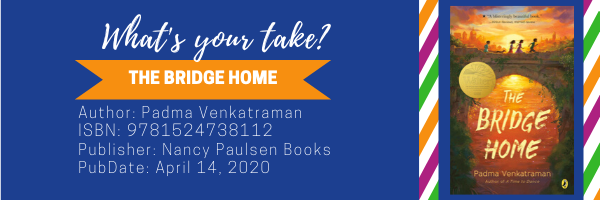By Michele Ebersole, University of Hawaii, Hilo, HI, and Yoo Kyung Sung, University of New Mexico, Albuquerque, NM

This month Michele Ebersole and Yoo Kyung Sung explore the deep and complicated theme of “sense of belonging.” Michele began by creating a text set with a focus of sense of Hawai’i. When she shared it with Yoo Kyung, it helped them explore that sense of place could be a sense of belonging, sense of responsibility, sense of excellence, sense of total well-being, sense of aloha, etc. Perhaps for New Mexico, it would take a sense of high desert, turquoise, Indigenousness, and sense of North and South. They think that “sense of belonging” may capture different dynamics in stories of communities and also reflect young people’s lives within a community as space. The four books they chose illustrate various faces of communities; they show that community is something you enter as a new member and sometimes you are a small community itself. Sense of belonging is a process of making sense of who you are and where you are. This theme unfolds with the four books presented this month through different characters and various locations such as India, Caribbean, and the U.S. They begin with The Bridge Home by Padma Venkatraman.

MICHELE: This story fits beautifully within the theme that we discuss this month–Sense of Belonging. The title itself, The Bridge Home, suggests that the story is about the bridge to finding one’s way home.
Many different topics, issues and themes weave into the story. In the beginning, the main character faces the choice to leave an intolerable living situation in hopes of creating a better one and in doing so becomes homeless. Homelessness is a complicated issue that many of us do not choose to face or address. The story is set in India and includes cultural nuances, but it also highlights universal human conditions that may increase empathy and understanding toward the growing number of youths around the world who might be living on the streets.
While living on their own, the main character, Viji, and her sister, Rukku, must struggle to meet their basic needs by scavenging for food in the trash heaps, fighting for safe shelter, escaping and avoiding mean and harmful people, and maintaining basic health and hygiene to survive. It is through this lens that the reader sees at one level how hard it can be to find a place to physically survive and at another level, a place where they are emotionally secure and can feel a sense of belonging (a place they can find safety and comfort). The author does a remarkable job making the situations feel real for young readers, but at the same time she still provides hope and beauty in life. The characters face daily hardships, yet there are positive occurrences along the way that keep the reader hopeful. Although the girls encounter seemingly insurmountable difficulties and their situation is often desperate, they have each other and other helpful people they meet who help them survive. They form a “family” of sorts on an abandoned bridge with Muthi and Arul, two boys who are also homeless and experience love and comfort from the little dog, Kutti, who joins them along the way. Throughout the story a number of noteworthy adult characters help them, like Teashop Aunty who gives them beads so that Rukku can make necklaces to sell for money, or the gardener, who appears to chase them away by throwing a juicy orange at them, or, in the end, Celina Aunty, who welcomes them into a shelter for homeless youth. It is heartwarming amid the fear and desperation to find strength and belonging in the solid bond they have with each other and the caring relationships that they build with others.
Throughout the story, Viji faces adult responsibilities such as caring for her sister. She is also wrought with guilt and remorse over some of the decisions she must make in order to survive. In the end, she finds a means through which she can tell her story, find peace and a sense of purpose and belonging.
Even though some of the events in the story are tragic, I do believe Venkatraman provides intermediate readers with a way to see how, tough life can be and despite being homeless, one can still move forward and, like Viji, find the bridge home.
YOO KYUNG: The Bridge Home reveals such known social secrets that adults cannot protect children even though adults are supposed to protect children and keep their basic rights. First of all, Viji and Rukku couldn’t be promised that their basic rights would be well-protected. Even though they were born there and raised in a form of family, neither their home nor family name can protect their youth and innocence. In such a young age, the sisters learn the fear of domestic violence and what irresponsible adults could do harm in their own home. The only choice to stay safe is to leave home, and say a good-bye to her loving mother.
This book questions how young children are still able to develop a sense of belonging when their circumstances don’t seem to allow any hope that they can find a place and people they feel they belong to. Instead, they are continuously exposed to instability and insecurity. They learn and discover many different shapes and colors of danger without shelter or secured system. Children are powerful, however. Instead of staying defeated by the fact they ran away from everyday violence and became homeless, Viji and Rukku gradually create their sense of place with people they meet for the first time (mostly). As the older sister, Viji exposes her rawness of reality. She witnesses the vulnerable mother experience violence. Viji’s heart grows to be mature soon, like a grown-up. Her interpersonal skills, to make friends with new people, helps her develop a sense of place and even nurture new relationships with new kids on the streets and make a new family with them. This story shows that a physical structure doesn’t necessarily make children feel “belonging.” Viji and Rukku show that a sense of belonging is created with people who understand and love each other.
Author: Padma Venkatraman
Publisher: Nancy Paulsen Books
ISBN: 9781484781517
Date Published: February 05, 2019
Throughout August 2019, Michele and Yoo Kyung give their takes on books on the theme of a sense of belonging. Check back each Wednesday to follow the conversation!
- Themes: Bridge Home, Michele Ebersole, Padma Venkatraman
- Descriptors: Books & Resources, My Take/Your Take
